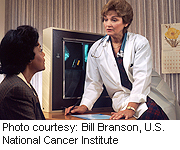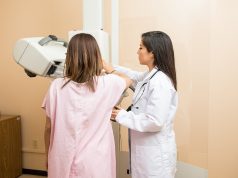More than a third with locally-advanced disease don’t get treatment aimed at preventing tumor’s return
WEDNESDAY, Feb. 18, 2015 (HealthDay News) — Many American women with locally-advanced breast cancer do not receive recommended radiation therapy after mastectomy, according to a study published online Jan. 14 in the Journal of the American College of Surgeons.
Experts at the U.S. National Cancer Institute currently recommend that breast cancer patients who undergo mastectomy receive radiation therapy if their cancer has spread to four or more nearby lymph nodes. However, in the new study, which tracked 56,990 such breast cancer cases in the United States between 1998 and 2011, researchers found only 65 percent of patients received follow-up radiation therapy. The researchers “were quite startled by the finding,” lead author Quyen Chu, M.D., M.B.A., professor of surgery at the Louisiana State University Health Sciences Center in Shreveport, said in a news release from the American College of Surgeons.
Factors such as race/ethnicity, income and education level, health insurance, where patients lived or where they were treated, or the presence of other health problems did not influence whether these patients received radiation therapy. However, women who had received chemotherapy had more than five times the odds of getting radiation treatment compared to those who had not.
About 82 percent of the patients in the study received chemotherapy. Chu theorized that women who decided to skip chemotherapy might also be less willing to undergo radiation therapy. Still, the exact reasons why more than a third of patients forgo postoperative radiation remains unclear. “From this study, we could not tease out whether patients refuse treatment or there is a lack of awareness among women and physicians about the need for radiation therapy after mastectomy for locally-advanced breast cancer,” Chu said.
Copyright © 2015 HealthDay. All rights reserved.








